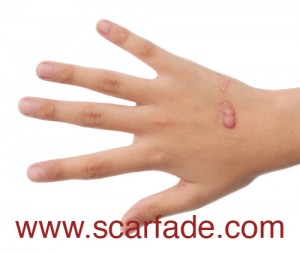The hands are notorious for developing some of the most perplexing scars. They’re not only highly visible, but they can be very thick and constrictive, causing a limited range of motion. Doctors use hand surgery to treat a variety of injuries and diseases. Taking a few simple steps can help to minimize scars after hand surgery.
Why Hand Surgery?
Since you rely on your hands for a multitude of daily living activities, it’s important that hand dexterity, strength and range of motion are at their best. Sometimes it’s important to do invasive surgical repair to improve current conditions. While it takes the hand time to heal, surgery can improve the ability to use your hands in the long run. Short-term pain and discomfort are part of the process in exchange for long-term improvement. Some common reasons for hand surgery include Carpal Tunnel Syndrome, Dupuytren’s Contracture, Skier’s Thumb and Rheumatoid Arthritis.
How Hand Skin is Different
One reason hands heal differently than other parts of the body is because the skin is different. It’s thicker and tougher. The palms have ridges in the skin, but don’t have hair. The nerves in the hand are also more sensitive than other body parts. There are about 200,000 neurons at work to conduct signals between your brain and your hand muscles.
What to Expect After Hand Surgery
Sutures are often used to keep the incision closed. Once the sutures are removed, your wound may separate a little bit, but it’s not in danger of re-opening. This is normal. You might experience peeling or flaking of the skin as well. About a week after your operation, scar tissue begins to shrink and pull, causing pain. The tissues will stiffen, potentially limiting your range of motion.

Wound Care
Swelling and pain are part of the healing process after hand surgery. Follow your doctor’s recommendations on wound care to speed up the healing process and get the best possible outcome. Keep the area clean and do the prescribed exercises to prevent permanent limitations.
Range of Motion
As new skin forms a scar on your hand, it will feel tight.
- Reduce swelling and stiffness by elevating your hand above your heart whenever possible.
- Stretching exercises can improve your range of motion and prevent permanent constriction. It also helps minimize your scars. Consult with your physical or occupational therapist for the types and frequency of exercises.
- Gently and rapidly tapping on the tender spots on your hand for three minutes at a time, with a one minute break in between tapping, can lessen hand pain.
- Massaging the scar with your fingertips several times a day will also help relieve constriction. Holding your finger against the scarring skin without moving it across the surface, push the skin sideways, holding the extreme position for about five seconds at a time. Take turns going up, down, back and forth. This is helpful within the first three months of scar development.
Scar Treatment
Once the wound has healed, you can begin to focus on scar reduction.
- Keep your hands moist and clean while your scar is healing.
- Applying scar gel can help reduce visibility and thickness.
- Picking at the scabs and peeling skin will only slow down the natural healing process and make your scar more prominent.
Scarfade silicone scar gel is available over the counter without a prescription. When used regularly for three to four months, it can make hand scars less noticeable. Stop using it when you no longer see improvement.
